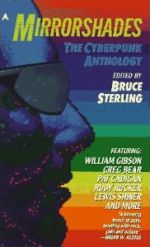Clothes Make the Man (or Woman):
Techwear and character in scifi
The black armor for Felix represents the horror, insanity, and futility of war, and his attempts to shed the suit reflect his desire to escape the war and to come to terms with his own tragic past. The external suit is also mirrored internally by a part of Felix’s mind he calls the “Engine”, a survival instinct which controls his actions in combat, as if a machine is controlling him rather than the other way around.
The suit and what it represents is inseparable from Felix’s character, but also thus becomes its own character, an antagonist even. It is and at the same time is not a mere machine mindlessly obeying his commands; it is instead something he fears and with which he must negotiate: “It was a machine. It did not care. It would work if told to. It would not if not. It was no serpent. It would not crush him. It would not crave his flesh. But still he feared. And later simply breathed and stared and felt relief. This time, as at other times, the suit had chosen to obey him.” (p.13)
For Crow, however, the suit starts as an antagonist, and only later becomes (literally) part of his character. He treats the empty armor at first as mere loot, but it quickly turns into an obstacle to be overcome as he and his historian friend try to come to terms with the war it represents, but which they know little about. They fear the suit, which is seated in the lab as if it were alive, but nevertheless they continue to return to it. The suit both influences Crow’s character and is a character.
But techwear need not be a complete body-covering suit in order to inform character. Sometimes a simple pair of sunglasses will suffice. The cyberpunk movement introduced a whole new assortment of techwear and implants, but the most prominent symbol is undoubtedly sunglasses.
In William Gibson’s Neuromancer (1986), dubbed “the quintessential cyberpunk novel” by Bruce Sterling, the protagonist, Case, meets one of the most memorable recurring characters in scifi. Molly, first introduced in “Johnny Mnemonic” (1981), has a pair of mirrored lenses surgically affixed to her face, completely covering her eyes. “She wore mirrored glasses… He realized her glasses were surgically inset, sealing her sockets. The silver lenses seemed to grow from smooth pale skin above her cheekbones, framed by dark hair cut in a rough shag” (Neuromancer, p.24). These lenses augment her sight, providing night vision and heads-up (eyes-up?) digital readouts. She also has Wolverine-style retractable razor-sharp claws installed in her fingertips, which are handy in a fight and earn her the nickname “Steppin’ Razor” from the Rastafarian inhabitants of Freeside, but it’s the sunglasses which are the most interesting in terms of character and symbolism.
In his preface to the cyberpunk anthology Mirrorshades, Bruce Sterling explains:
Mirrored sunglasses have been a Movement totem since the early days of ’82. The reasons for this are not hard to grasp. By hiding the eyes, mirrorshades prevent the forces of normalcy from realizing that one is crazed and possibly dangerous. They are the symbol of the sunstaring visionary, the biker, the rocker, the policeman, and similar outlaws. Mirrorshades, preferably in chrome and matte black, the Movement’s totem color, appeared in story after story, as a kind of literary badge.
Case sees nothing but reflections in Molly’s shades. If there’s a romance in Neuromancer, it lies in Case’s struggle to connect with Molly, to gain insight into who she really is, what sorrows she has buried in her past which makes her so hardened now. But if eyes are the windows to the soul, Molly certainly doesn’t want anyone peeking in. Indeed, when she had them installed, she her tear ducts relocated to the inside of her mouth. So Molly doesn’t cry; she swallows her sorrows instead.
























3 comments
[…] This post was mentioned on Twitter by Jo Thomas, Michael Ray – Editor. Michael Ray – Editor said: "Clothes Make the Man (or Woman):Techwear and character in scifi" – an excellent essay by Henry Cribbs in Redstone SF #3. http://is.gd/e0AnG […]
[…] Clothes Make the Man (or Woman):Techwear and Character in SciFi by Henry […]
A quibble: Hideo isn’t blind when Molly gets captured–he isn’t blinded until later–and in fact they never fight at all. It’s really Riviera, the illusionist, who defeats her, as you mention.